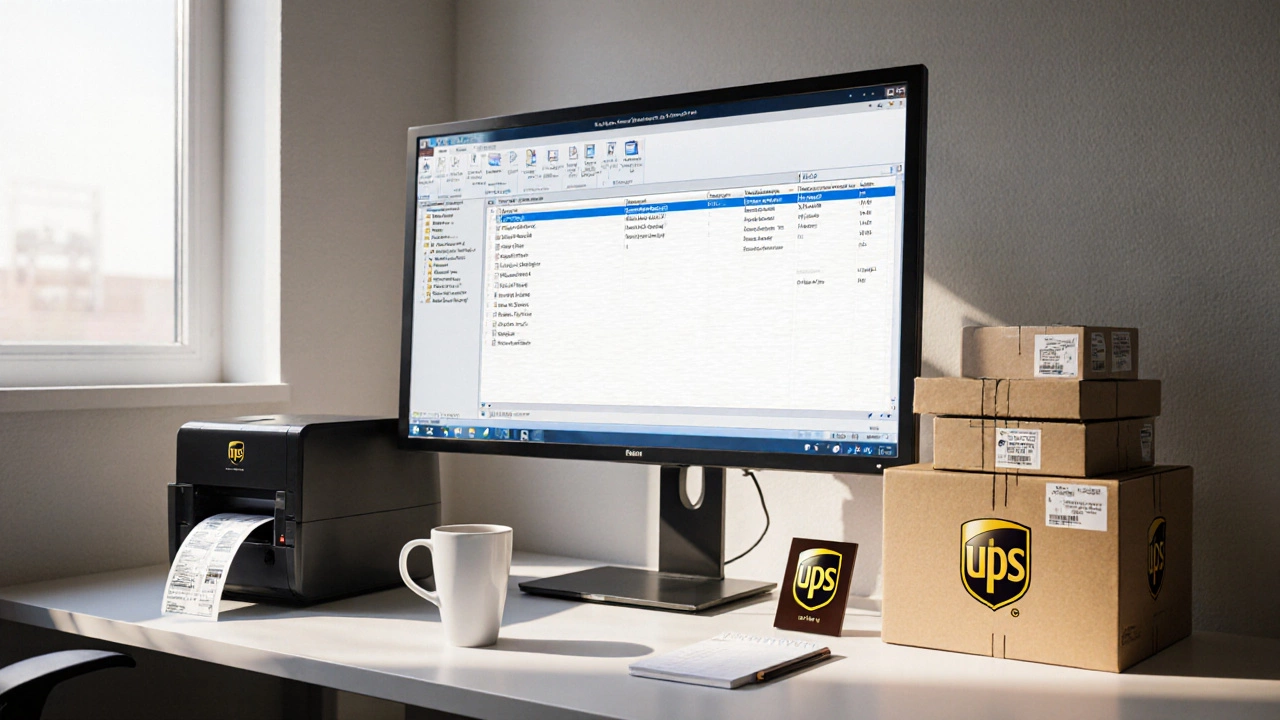UPS WorldShip: The Official UPS Shipping Software Explained
Discover what UPS WorldShip is, its core features, pricing, setup steps, and how it compares to other shipping software for high‑volume UPS shippers.
When working with UPS courier, a parcel delivery service that handles fast, door‑to‑door shipments for both domestic and international packages. Also known as UPS shipping, it connects businesses and individuals to a global network of hubs and trucks.
One of the biggest strengths of a courier service, offers time‑critical delivery, tracking, and handling of varied package sizes is its ability to calculate accurate shipping rates. UPS courier rates depend on weight, dimensions, distance, and service level—whether you need next‑day, two‑day, or a slower economy option. This pricing formula, which we break down in many of our posts, lets you compare costs against rivals like USPS or FedEx and choose the most cost‑effective solution.
International shipping is a major driver for UPS courier decisions. When you ship abroad, customs duties, fuel surcharges, and destination‑specific fees all influence the final bill. Our guide on UPS vs USPS international pricing shows how these extra layers affect overall cost and delivery speed. Another crucial element is door‑to‑door delivery, a service UPS promotes heavily. It means the package is collected from your address and dropped off at the recipient’s doorstep, eliminating the need for a post office visit. This convenience is especially valuable for bulky bike transports, which our site often handles in Chennai.
Logistics also plays a part. UPS operates a massive fleet of trucks, planes, and sorting hubs, making it the biggest logistics company in the U.S. By integrating a logistics management system, UPS can route packages efficiently, reduce fuel use, and keep delivery times reliable. When you pair this network with a clear understanding of price breakdowns, you get a powerful shipping solution that scales from single parcels to full‑truck loads.
So how do you decide if UPS courier is right for your shipment? First, ask yourself what speed you need. If you’re moving a high‑value item across state lines, UPS’s two‑day air service offers a good balance of speed and price. For less urgent goods, the ground service saves money while still providing tracking. Second, consider the destination. For overseas orders, UPS’s extensive customs expertise often beats smaller carriers who may lack the same level of compliance support.
From a cost‑saving perspective, knowing how UPS calculates rates helps you trim expenses. Weight brackets, dimensional weight rules, and package‑type surcharges all appear in the pricing formula. By packaging tightly and weighing accurately, you can avoid unexpected fees. Our post on courier price calculations dives into real‑world examples that show where a few extra ounces can add up.
Another angle is the type of product you ship. Fragile electronics, heavy machinery, or even motorcycles each have specific handling requirements. UPS offers specialized packaging and insurance options, which we discuss in depth for gig workers and e‑commerce sellers. Understanding these add‑ons before you book can prevent surprise costs later.
Finally, think about the broader logistics ecosystem. If you run an online store, integrating UPS services with your order‑management software streamlines label creation, tracking updates, and returns handling. This integration reduces manual work and improves customer satisfaction—key points covered in our e‑logistics articles.
Below you’ll find a curated collection of articles that dive deeper into each of these topics. Whether you’re comparing rates, learning about international shipping nuances, or figuring out how door‑to‑door delivery works, the posts will give you practical tips you can apply right away.

Discover what UPS WorldShip is, its core features, pricing, setup steps, and how it compares to other shipping software for high‑volume UPS shippers.